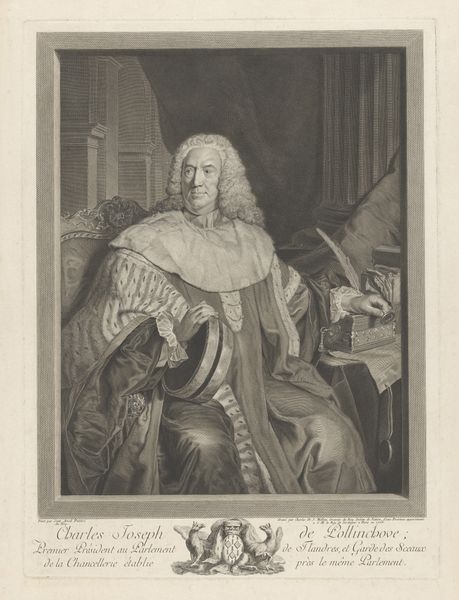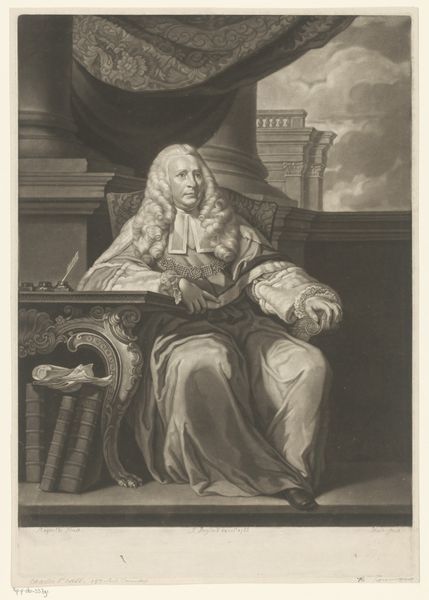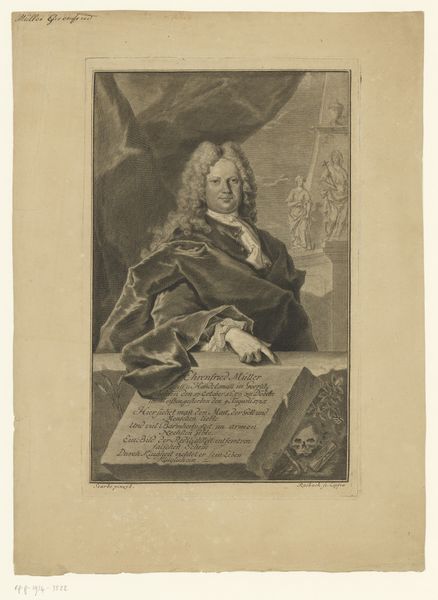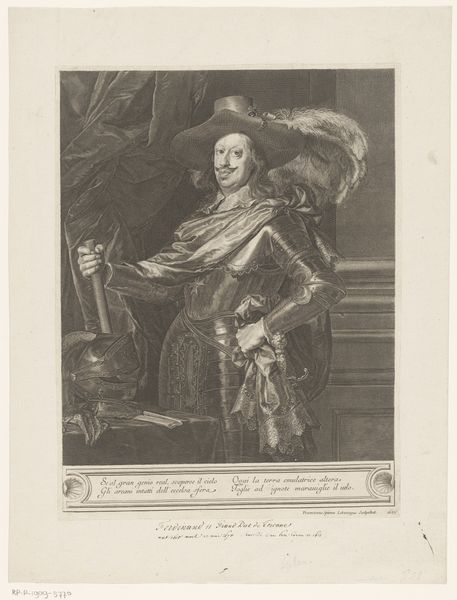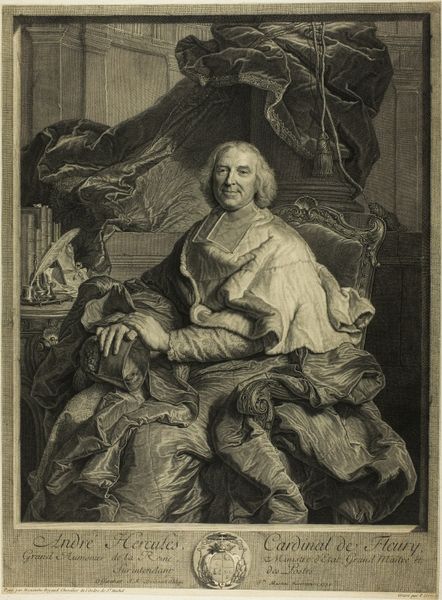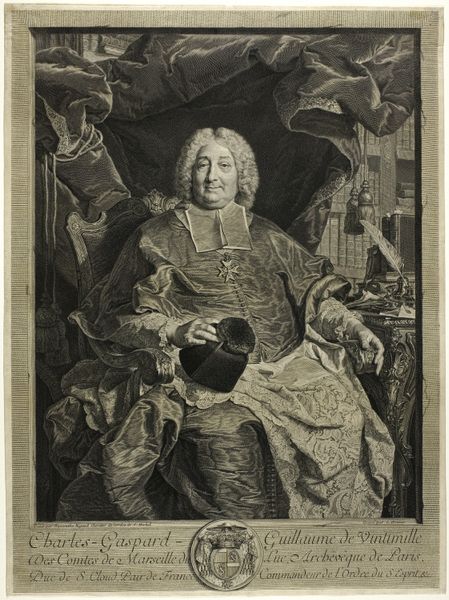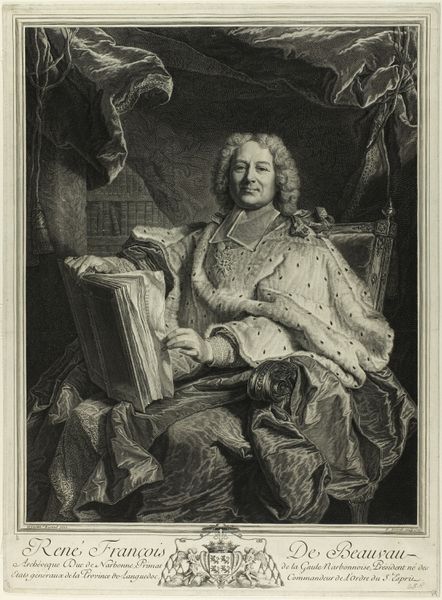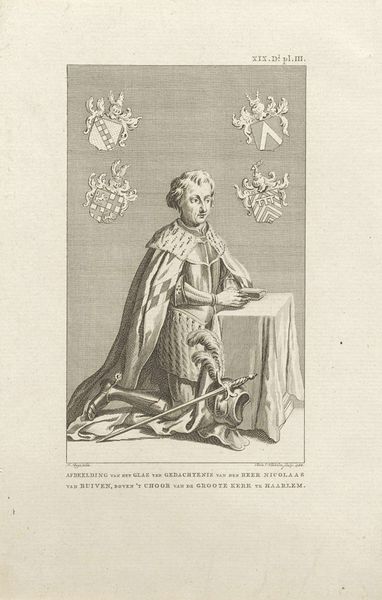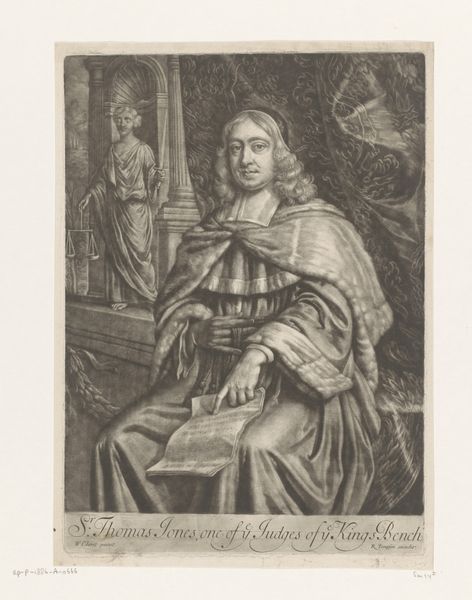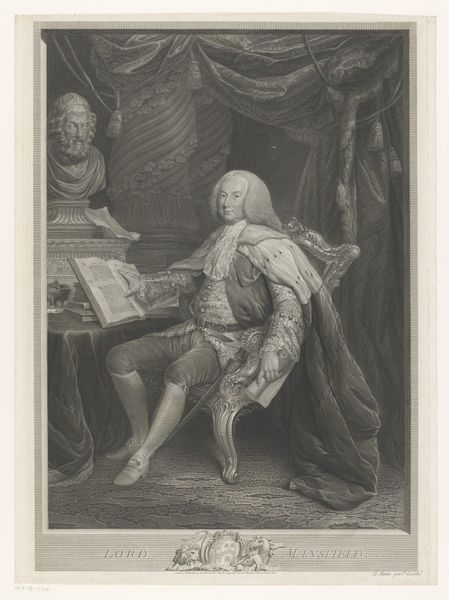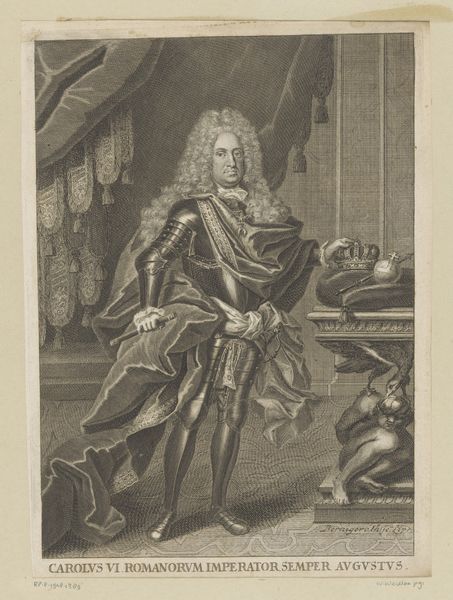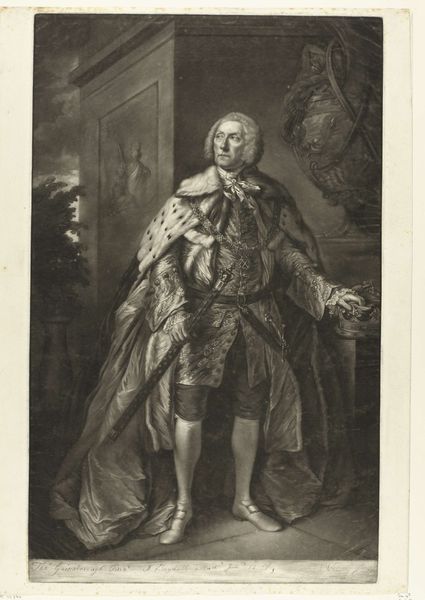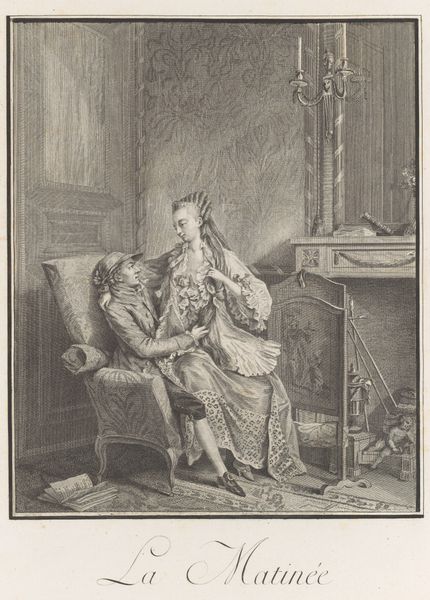
engraving
#
portrait
#
baroque
#
old engraving style
#
history-painting
#
engraving
Dimensions: height 366 mm, width 221 mm
Copyright: Rijks Museum: Open Domain
Curator: Editor: Here we have the "Portrait of César d'Estrées," an engraving created sometime between 1687 and 1738 by Pierre Drevet, currently residing at the Rijksmuseum. The level of detail is incredible! I’m immediately drawn to all the textures - the fabric, the books...the sheer *stuff* in this image speaks to power. What aspects of this portrait capture your attention? Curator: Considering Drevet’s historical context is vital here. This portrait isn’t just a likeness; it’s a carefully constructed representation of power and authority. Look at the deliberate display of wealth and knowledge – the books, the elaborate vestments, the background ornaments of crossed keys and a snake wrapped around an anchor. It signals not only the subject’s status but also the power of the institutions he represents. It asks you as the viewer, "What did holding the reigns of Catholic and political might *look* like?" How do you think such deliberate visual signalling impacted public perception? Editor: I see what you mean. So it's more about image construction than pure artistic expression. Does this make this portrait a piece of propaganda? Curator: It's not quite so simple. I wouldn't label it as straight propaganda. A skilled engraver like Drevet had a patronage system to adhere to. Think about it as image crafting through the filters of Baroque-era tastes, and social-political demands. His choices likely aimed to flatter the sitter *and* reinforce existing power dynamics to prospective buyers. So what’s left is the tricky part to unpack today: which interests served and to what extent? Editor: That makes so much sense. It's a calculated portrayal of status rather than a simple attempt to capture what someone looks like. Thanks, that's very helpful! Curator: Absolutely! Considering this as a visual artifact rooted in a specific moment really enriches our understanding.
Comments
No comments
Be the first to comment and join the conversation on the ultimate creative platform.
